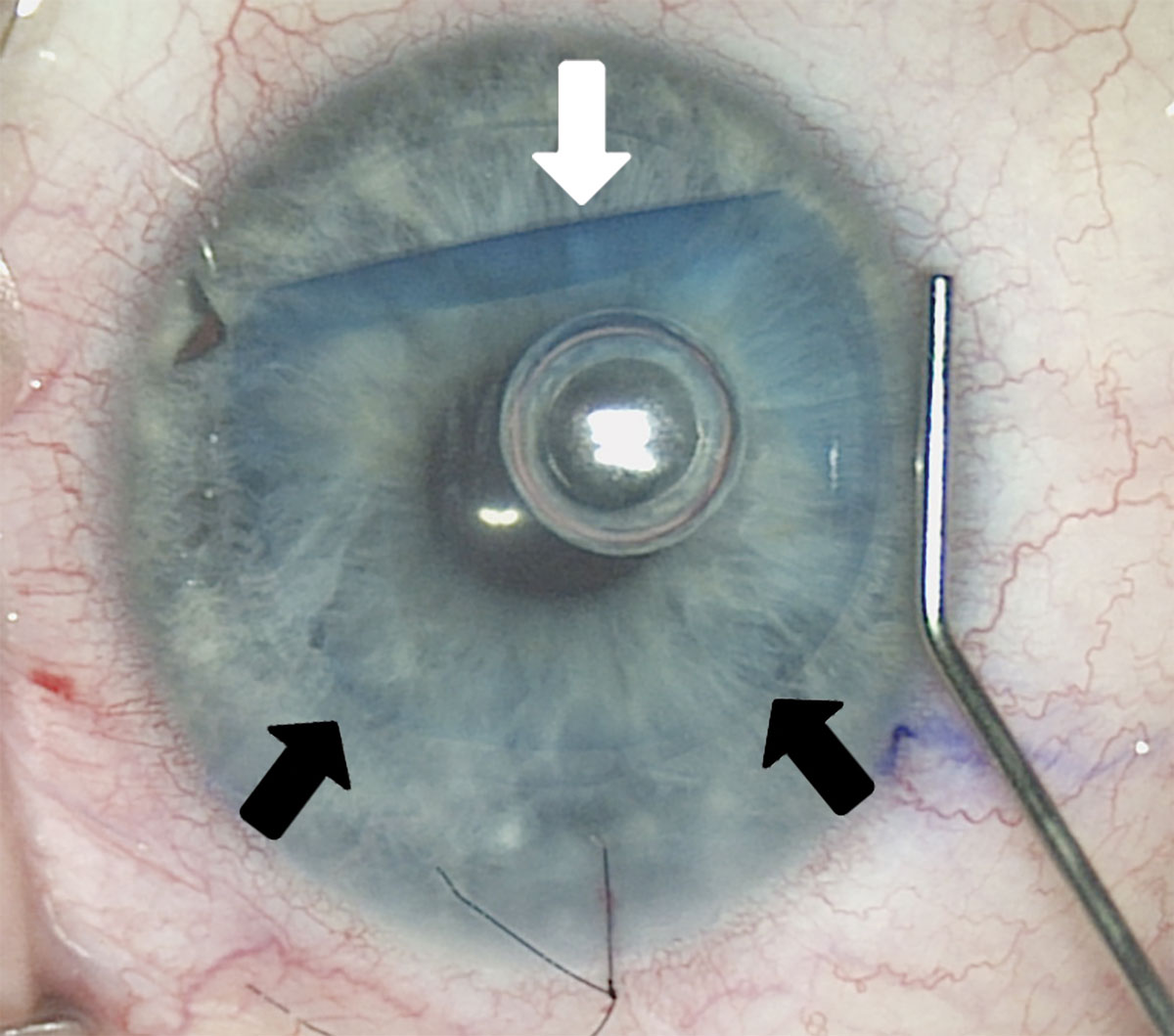 |
|
DMEK rates nearly doubled from 2012 to 2023, from 48% to 82% of keratoplasties, respectively. Photo: Kathleen Kelley, OD, Francis Price, Jr., MD, and Marianne Price, PhD. Click image to enlarge. |
The last 20 years or so has seen great advancements in types and techniques of corneal transplants available for patients. Specifically, lamellar keratoplasty procedures, including Descemet’s stripping automated endothelial keratoplasty (DSAEK), Descemet’s membrane endothelial keratoplasty (DMEK) and deep anterior lamellar keratoplasty (DALK), have increasingly been preferred over penetrating keratoplasty (PK) in clinical settings because of improved outcomes and reduced complications in some in some indications.
This, along with advances in contact lens fittings for keratoconus patients and the ability to perform corneal crosslinking, has changed the landscape of keratoplasty indications, which is retrospectively reviewed in a new study. Procedures and indications came from a singular German eyecare center, collecting data from 2004 to 2023.
Reviewed were 7,130 corneal transplants, with a marked decline in PK from 95% of keratoplasties in 2004 to just 11% in 2023. Conversely, DMEK increased from 48% in 2012 to 82% in 2023. Fuchs endothelial dystrophy was found to be a dominant indication, with great increase from 24% in 2004 to 72% in 2023. Also conversely, keratoconus indication decreased from 25% in 2004 to 4% in 2023.
PK specifically demonstrated a noticeable shift in indication, in descending order, to comprise bullous keratopathy, Fuchs and keratoconus in 2004 to keratoconus, graft failure, corneal scars and ulcers in 2023. Following DMEK, repeat keratoplasty was rare, but there was an upward trend for PK.
From these trends, the study authors relay that “DMEK has emerged as a successful intervention for treating endothelial disease, while PK retains its qualitative indispensability for a wide range of indications.”
Upon discussion, the authors elaborate that their finding of decline in PKs performed reflects an overall global trend. Previously published literature also reflects the findings here of the relative and absolute importance of DMEK; however, the authors note it was surprising that there was a reciprocal development with keratoconus. They do add, though, that “keratoconus is expected to remain the main indication for PK. Moreover, PK will remain the gold standard for therapeutic indications such as corneal ulcers.”
Finally, while the number of PKs performed has decreased, so has the total number of therapeutic PKs, as well as a negative trend in relative share of corneal grafts. Despite this, emphasis must be placed on the fact that the proportion has remained relatively stable over the last decade.
As the investigators explain, “this clearly underlines how important it is for a corneal bank to keep a large variety of corneal buttons in stock, especially for therapeutic indications for performing a PK, as alternative procedures have not yet been established. It is important to note that as certain surgical methods decline in use, it is crucial to maintain the necessary training and surgical expertise to ensure the availability of these techniques when needed.”
| Click here for journal source. |
Hoffmann JV, Betancor PK, Maier P, et al. Changing indications for keratoplasty: monocentric analysis of the past two decades. Graefes Arch Clin Exp Ophthalmol. September 14, 2024. [Epub ahead of print]. |


